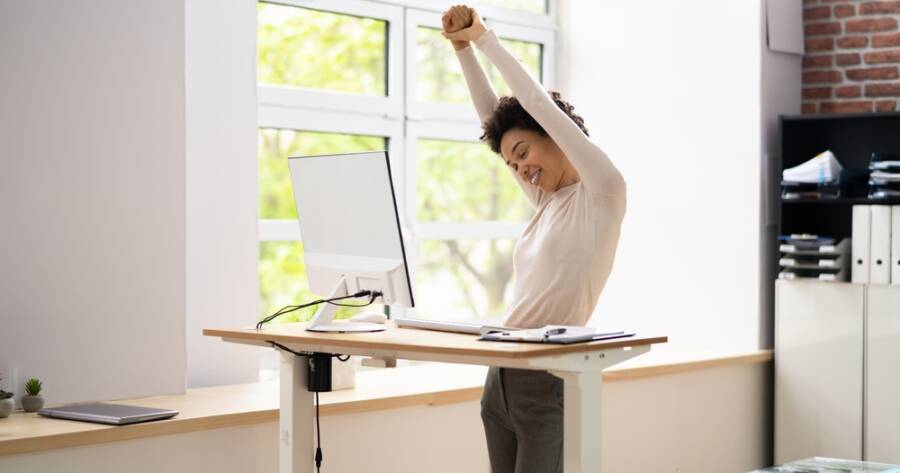If you spend long hours at a desk, posture problems can sneak up quickly. Slouching, back pain, and tight hips are common complaints among people who sit all day. A standing desk can help break that cycle. With a few smart habits and the right setup, you can improve your posture and feel better while working.
Start Slow and Let Your Body Adjust
One of the biggest mistakes beginners make is standing too long, too soon. If your body is used to sitting all day, jumping into full-time standing can cause discomfort in your legs, feet, and lower back. Instead, start with short standing sessions of 5 to 15 minutes at a time, then return to sitting. Alternate throughout your workday.
Over time, your muscles and joints will grow stronger and more accustomed to standing. As you increase your standing time, aim for a balanced approach—switching between sitting and standing every 30 to 60 minutes. This rotation helps you avoid fatigue and supports better overall posture without overstraining your body.
Adjust the Desk to the Right Height
A standing desk won’t help your posture if it’s not set up correctly. Begin by adjusting the desk height so that your elbows form a 90-degree angle while typing. Your wrists should float comfortably above the keyboard, and your shoulders should stay relaxed—not hunched or raised.
The top of your monitor should be at or slightly below eye level. If you’re looking up or down too much, you could strain your neck. Use monitor risers or adjustable arms if needed. Your screen should be about an arm’s length away. These simple changes reduce strain on your spine and encourage you to stand upright.
Wear Supportive Footwear and Use Anti-Fatigue Mats
The surface you stand on matters just as much as how you stand. Hard floors can lead to sore feet, aching legs, and poor circulation. Wearing supportive shoes with cushioning can help. Avoid high heels or completely flat shoes, both of which can throw off your alignment.
An anti-fatigue mat adds comfort by giving your feet a slightly softer surface. These mats encourage small movements in your leg muscles that improve blood flow and reduce fatigue. If you find your feet or knees start hurting after a while, it’s a sign to either switch positions or add more support.
Practice Good Standing Habits
Even if your desk and screen are in the right position, how you stand matters. Keep your weight balanced between both feet. Avoid locking your knees or leaning heavily on one leg. Over time, poor standing habits can lead to just as many posture problems as sitting.
Try to engage your core muscles while standing. A gentle tightening of your abdominal muscles helps support your spine and prevents you from leaning forward. Also, shift your weight slightly from time to time—bend your knees, roll your ankles, or take a short walk to keep your circulation moving.
Mix Movement Into Your Workday
Standing is better than sitting all day, but movement is even better than standing still. Standing desks make it easier to incorporate small bursts of movement into your routine. Use phone calls as a chance to walk around. Take stretch breaks between tasks. Do gentle neck and shoulder rolls throughout the day.
Some people add small tools like balance boards or footrests to keep their bodies more active. Others find that doing quick squats or calf raises every hour helps with energy and focus. You don’t need to follow a strict routine—just find ways to move more often. Movement keeps your joints healthy and supports good posture long-term.
Know When to Sit and Rest
Standing desks are helpful, but they’re not a cure-all. Your body still needs rest, and sitting is sometimes the better choice—especially if you’re tired or recovering from strain. Listen to your body and use both sitting and standing to your advantage.
It can also help to review your chair setup. A good ergonomic chair with lumbar support can reduce slouching when you do sit. Think of the desk as part of a system, not a complete solution by itself.
Stand Taller Every Day
Improving your posture with a standing desk takes time and attention, but the benefits can be worth it. You’ll feel more awake, reduce back and neck pain, and move through your day with more energy. Start with small steps, stay consistent, and your body will thank you.
By learning how to use your standing desk the right way—and making posture part of your daily routine—you can work smarter, feel stronger, and stand taller every day.

